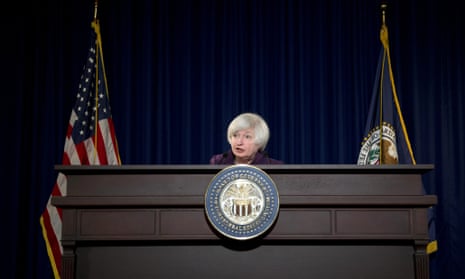The international body that represents the world’s central banks has issued a stark warning that an unprecedented period of ultra-low interest rates mask deep weaknesses in the global economy and threaten to be the trigger for the next financial crisis.
In its annual report, the Basle-based Bank for International Settlements says that what used to be considered “unthinkable” risks becoming the “new normal”, with clear risks for future stability.
BIS said the need for abnormally low level of interest rates to be kept in place six years after the trough of the global financial crisis in early 2009 reflected a broader malaise.
It added that monetary policy – the willingness of central banks to print money and keep borrowing costs low – was bearing too much of the burden and that governments needed to rely more on structural reform to secure sustainable growth.
BIS was the one global body to point out in advance of the financial crash of 2007 that booming asset prices could cause problems even during periods of low inflation, and its latest warning will be seen as a call for its central bank members to start returning monetary policy to more normal settings.
“Globally, interest rates have been extraordinarily low for an exceptionally long time, in nominal and inflation-adjusted terms, against any benchmark”, the report said.
“Such low rates are the most remarkable symptom of a broader malaise in the global economy: the economic expansion is unbalanced, debt burdens and financial risks are still too high, productivity growth too low, and the room for manoeuvre in macroeconomic policy too limited. The unthinkable risks becoming routine and being perceived as the new normal.”
The US Federal Reserve is likely to be the first central bank in any major advanced country to raise interest rates. Wall Street expects the Fed to tighten policy later this year, with the Bank of England forecast to follow in 2016. The European Central Bank and the Bank of Japan are currently still using quantitative easing – the creation of electronic money – to boost activity.
BIS noted that it was proving “exceedingly difficult” to understand the malaise affecting the global economy, but said the problem stemmed from a failure to come to grips with financial booms and busts that left deep and lasting scars.
“In the long term, this runs the risk of entrenching instability and chronic weakness. There is both a domestic and an international dimension to all this. Domestic policy regimes have been too narrowly concerned with stabilising short-term output and inflation and have lost sight of slower-moving but more costly financial booms and busts.
“And the international monetary and financial system has spread easy monetary and financial conditions in the core economies to other economies through exchange rate and capital flow pressures, furthering the build-up of financial vulnerabilities. Short-term gain risks being bought at the cost of long-term pain.”
BIS added that far from being the solution, persistently low interest rates risked becoming the problem. “Rather than just reflecting the current weakness, low rates may in part have contributed to it by fuelling costly financial booms and busts. The result is too much debt, too little growth and excessively low interest rates. In short, low rates beget lower rates.”
As evidence of its thesis, BIS said that between December 2014 and the end of May 2015, on average around $2tn (£1.27tn) in global long-term sovereign debt, much of it issued by euro area sovereign states, was trading at negative yields.
At their trough, interest rates on French, German and Swiss bonds were negative out to a respective five, nine and 15 years, with the result that investors were paying for the privilege of holding government debt.
“Such yields are unprecedented”, BIS said. “Yet, exceptional as this situation may be, many expect it to continue. There is something deeply troubling when the unthinkable threatens to become routine.”

Comments (…)
Sign in or create your Guardian account to join the discussion